#linguistic-diversity-regions
Photo
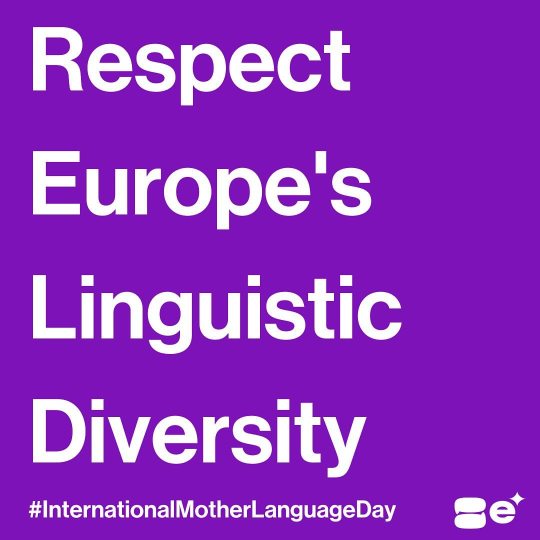





There are 84 recognised languages native to the European Union, but only 24 of them are official. Most of the time, the speakers of indigenous, minority or “regional” languages are discriminated against and have the state’s official language imposed in their everyday life.
Reposting from EFA Youth’s Instagram account:
On International Mother Language Day we reiterate our demand for the right to live, learn, work and communicate in our own languages.
We’ve set out 4 steps for the European youth to improve linguistic diversity on our continent.
1️⃣ To demand the right to live, to work and to communicate in our own languages.
2️⃣ To fight for the right to learn our own languages and to be taught in them. Education is key to a language’s survival.
3️⃣Insist on public services being delivered in our own languages for the benefit of all.
4️⃣Speak up and use your languages, no matter how confident you are, the way to guarantee a language’s future is to speak it wherever possible.
#international mother language day#languages#language#langblr#lingblr#sociolinguistics#europe#european union#diversity#minority languages#eu#cultural diversity#linguistics#efa#minorities#minority rights#regional languages#indigenous languages#polyglot
360 notes
·
View notes
Text
Exploring the Rich Tapestry of English Dialects: Origins, Variations, and Unique Characteristics
English dialects can vary significantly across different regions and communities, resulting in a wide range of accents, vocabulary choices, grammar structures, and pronunciation differences. Here are some of the major types of English dialects:
British English: Spoken in the United Kingdom and its former colonies, including England, Scotland, Wales, and Northern Ireland. It encompasses various…

View On WordPress
#British vs American English#Comparative linguistics#Cultural influences on language#education#English#English language geography#English language variations#english-language#english-learning#Global English variations#Historical linguistics#inglés#language#Language Comparison#Language evolution and history#Language variation research#language-learning#languages#learn-english#learning#Linguistic anthropology#linguistic diversity#Regional accents and dialects#Shakespearean language analysis#Sociolinguistics
0 notes
Text
Taishan Translation Service: Cantonese vs Taishanese Language Variations
The Untold Story of Taishanese Influence in America’s Chinatowns
Taishanese, a lesser-known dialect of the Chinese language, has played a pivotal role in shaping the language and culture of Chinatowns across North America. This article delves into the fascinating history and significance of this linguistic gem, shedding light on its impact on the Chinese-American community and the importance of…

View On WordPress
#Chinatowns#Chinese-American community#Cultural Heritage#Guangdong Province#language translation services#LanguageXS#Linguistic Diversity#North America#Siyi region#Taishanese language
0 notes
Text
Title: "The Significance and Diversity of African Names"
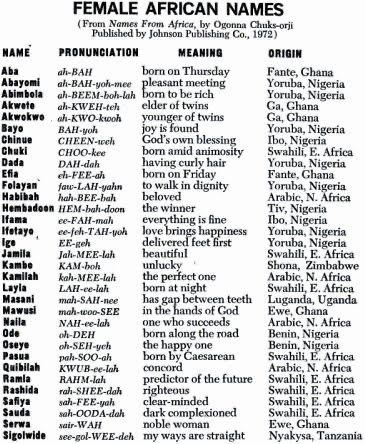
Introduction
African names are a reflection of the continent's incredible diversity, culture, history, and traditions. With over 2,000 distinct languages spoken and a multitude of ethnic groups, Africa is a treasure trove of names that carry deep meanings and unique stories. In this article, we'll explore the rich tapestry of African names, their significance, and the cultural diversity they represent.
The Importance of Names
Names hold a special place in African societies. They are more than mere labels; they encapsulate a person's identity, heritage, and often convey messages of hope, aspiration, and blessings. African names are deeply rooted in the belief that a name can shape a person's destiny and character.
Linguistic Diversity
Africa's linguistic diversity is astounding, with thousands of languages spoken across the continent. Each language group has its distinct naming traditions, resulting in a vast array of names. For example, in West Africa, Akan names such as "Kwame" (born on a Saturday) and "Kofi" (born on a Friday) are common, while in East Africa, Swahili names like "Amina" (trustworthy) and "Nia" (purpose) are prevalent.
Meanings and Symbolism
African names are rich in meaning and symbolism, often reflecting the circumstances of a child's birth, their family history, or the aspirations of their parents. Names can signify virtues like courage, strength, and wisdom or convey hopes for a prosperous and fulfilling life.
Family and Heritage
In many African cultures, names are chosen to honor ancestors, celebrate cultural heritage, or connect the child to their roots. This practice ensures that generations remain connected to their family's history and traditions. For example, the Igbo people of Nigeria often use "Ngozi" (blessing) to convey the hope for a blessed life..
Naming Ceremonies
Naming ceremonies are significant events in many African communities. These ceremonies are joyous occasions where family and friends gather to celebrate the birth of a child and bestow a name. The rituals and customs associated with these ceremonies vary widely, showcasing the diversity of African naming traditions.
Modern Influences
In today's globalized world, African names are not confined to the continent. Many people of African descent living outside Africa proudly bear African names, celebrating their cultural heritage and contributing to the global recognition of the beauty and significance of these names.
Conclusion
African names are a testament to the continent's diversity, culture, and history. They carry profound meanings, connect individuals to their heritage, and celebrate virtues and aspirations. As we embrace and appreciate the beauty of African names, we also acknowledge the importance of preserving and passing on these cultural treasures to future generations, ensuring that the rich tapestry of African identity remains vibrant and thriving.
1. **Kwame (Akan, Ghana):** A male name meaning "born on a Saturday."
2. **Ngozi (Igbo, Nigeria):** A unisex name meaning "blessing" or "good fortune."
3. **Lulendo (Lingala, Congo):** A male name meaning "patient" or "tolerant."
4. **Amina (Swahili, East Africa):** A female name meaning "trustworthy" or "faithful."
5. **Kwesi (Akan, Ghana):** A male name meaning "born on a Sunday."
6. **Nia (Swahili, East Africa):** A unisex name meaning "purpose" or "intention."
7. **Chinwe (Igbo, Nigeria):** A female name meaning "God owns" or "God's own."
8. **Mandla (Zulu, South Africa):** A male name meaning "strength" or "power."
9. **Fatoumata (Wolof, Senegal):** A female name meaning "the great woman."
10. **Kofi (Akan, Ghana):** A male name meaning "born on a Friday."
These are just a few examples, and there are countless other African names with unique meanings and significance. It's essential to remember that Africa is incredibly diverse, and each region and ethnic group has its own naming traditions and languages, contributing to the rich tapestry of African names.
The most popular African names among Black Americans can vary widely based on individual preferences, family traditions, and regional influences. Many Black Americans choose names that connect them to their African heritage and celebrate their cultural roots. Here are a few African names that have been embraced by some Black Americans:
1. **Malik:** This name has Arabic and African origins and means "king" or "ruler."
2. **Amina:** A name of Swahili origin, meaning "trustworthy" or "faithful."
3. **Kwame:** Derived from Akan culture, it means "born on a Saturday."
4. **Nia:** A Swahili name representing "purpose" or "intention."
5. **Imani:** Of Swahili origin, it means "faith" or "belief."
6. **Jamal:** This name has Arabic and African roots and means "handsome."
7. **Ade:** A Yoruba name meaning "crown" or "royalty."
8. **Zuri:** Of Swahili origin, it means "beautiful."
9. **Sekou:** Derived from West African languages, it means "fighter" or "warrior."
10. **Nala:** This name is of African origin and means "gift."
It's important to note that while these names have African origins, their popularity among Black Americans can vary by region and individual choice. Additionally, some Black Americans choose to create unique or hybrid names that blend African and American influences, reflecting their personal and cultural identities. The naming choices among Black Americans are diverse and reflect the rich tapestry of their heritage and experiences.
African Languages: A Tapestry of Diversity and Culture"
Introduction
Africa is a continent known for its stunning natural landscapes, diverse wildlife, and rich cultural heritage. Among its many treasures, the continent boasts an astonishing linguistic diversity that is often overlooked. In this article, we delve into the fascinating world of African languages, exploring their diversity, cultural significance, and the challenges they face in a rapidly changing world.
The Linguistic Kaleidoscope
Africa is home to over 2,000 distinct languages, making it one of the most linguistically diverse regions on the planet. These languages belong to several different language families, including Afroasiatic, Nilo-Saharan, Niger-Congo, and Khoisan, each with its unique characteristics.
Niger-Congo Family: The vast majority of African languages, including Swahili, Yoruba, Zulu, and Kikuyu, belong to the Niger-Congo language family. This family stretches across West, Central, and Southern Africa, reflecting the continent's linguistic richness.
Afroasiatic Languages: Arabic, a member of the Afroasiatic family, has a significant presence in North Africa, while other Afroasiatic languages like Amharic are spoken in the Horn of Africa.
Nilo-Saharan Languages: Found in parts of East and North Central Africa, Nilo-Saharan languages include Dinka, Kanuri, and Nubian.
Khoisan Languages: These languages, characterized by their unique click consonants, are primarily spoken by indigenous groups in Southern Africa, such as the San and Khoi people.
Cultural Significance
African languages are not just tools of communication; they are repositories of cultural heritage and identity. They carry the history, stories, and traditions of their speakers. Each language is a key to unlocking the rich tapestry of African cultures, from oral storytelling and folklore to religious rituals and traditional medicine
Preserving Cultural Diversity
Despite their cultural importance, many African languages are endangered. The rise of global languages like English, French, and Portuguese, often due to colonial legacies, has led to the decline of indigenous languages. To address this, efforts are being made to document, preserve, and revitalize endangered African languages through education, community initiatives, and technology.
A Language of Unity
In some regions, African languages are a means of fostering unity. For example, Swahili, a Bantu language with Arabic influences, serves as a lingua franca in East Africa, promoting communication and cooperation among diverse ethnic groups.
Challenges and Opportunities
While African languages face challenges in an increasingly interconnected world, they also offer unique opportunities. Embracing linguistic diversity can strengthen cultural identities, promote inclusive education, and drive economic growth through multilingualism.
Conclusion
African languages are an integral part of the continent's rich heritage and cultural tapestry. They represent the diversity of Africa's peoples and their traditions. While challenges exist, there is hope that efforts to preserve and celebrate these languages will ensure that they continue to thrive, enriching the world with their unique beauty and significance. In an increasingly globalized world, Africa's linguistic diversity is a testament to the resilience and vibrancy of its cultures.

#life#animals#culture#aesthetic#black history#history#blm blacklivesmatter#anime and manga#architecture#black community#language
710 notes
·
View notes
Note
Is there a scientific theory about how the diversity of languages evolved? Or are linguists just like, "language is weird, we tried our best but we can't really splain it good?"
I'm kind of baffled by the question, to be honest. On the one hand, the world's languages are all quite similar, in that they use a sign system to encode meaning, and, beyond that, they all seem to have hit on nouns and verbs. If you've got that, surely the rest of the variation isn't that wild. But also it doesn't require much theory...? Like language change is observable in real time. Everyone experiences it by observing subtle variations in the speech of those who are younger than them—and in different regions. Multiply that by many generations and many different places and pretty soon you rather naturally end up with a lot of diversity.
In short, linguists have been able to explain this pretty well for a long, long time, but it was rather low-hanging fruit, I'd say.
315 notes
·
View notes
Text
🤔🧬 How do Gallifreyan Houses influence abilities and traits?
Forget the sorting hat, Gallifrey's got its own system for pigeonholing their kids. Each House shapes its members' abilities and traits through their distinct genetic Loom cores, mapping out their general talents when they're born.
Prydon Academy: Strategists and Linguists - Houses aligned with Prydon focus on developing strategic minds and language skills. Their Loom cores likely enhance brain regions for critical thinking and linguistic prowess, making them natural politicians and diplomats.
Arcal Academy: Scientists and Engineers - Arcal-affiliated Houses produce logical thinkers and scientific minds. Their genetic templates are tuned for analytical skills and technical understanding, perfect for those who love to unravel the mysteries of the universe.
Patrex Academy: Creative and Philosophical Minds - Houses from Patrex are all about creativity and deep thinking. They might have genetic enhancements for artistic abilities and telepathic skills, fostering a community of artists and philosophers.
Cerulean Academy: Environmental Guardians - Houses aligned with Cerulean nurture a connection with nature. Their Loom cores could instil empathy for ecosystems and a keen understanding of environmental sciences, creating guardians of Gallifrey's natural world.
Drome Academy: Social Advocates - Drome-focused Houses emphasise social awareness and empathy. Their genetic makeup might promote emotional intelligence and a strong sense of social justice, producing advocates for equality and democracy.
Scendeles Academy: The Versatile and Adaptive - Houses linked with Scendeles encourage a broad range of talents. Their Loom cores might be more diverse, allowing for adaptability and a wide array of skills, from innovative thinkers to practical problem-solvers.
So this leaves us with a fun reason for a poll. You might be a Hufflepuff, but ...
Gallifreyan Biology for Tuesday by GIL
→🫀Gallifreyan Anatomy and Physiology Guide (WIP)
→⚕️Gallifreyan Emergency Medicine/Monitoring Guides
→📝Source list (WIP)
-------------------------------------------------------
》📫Got a question / submission?
》😆Jokes |🫀Biology |🗨️Language |🕰️Throwbacks |🤓Facts
》📚Complete list of Q+A
》📜Masterpost
If you like what GIL does, please consider buying a coffee or tipping below to help make future projects, including complete biology and language guides.
#doctor who#dr who#dw eu#gallifreyans#GIL biology#GIL#gallifrey institute for learning#gallifreyan biology#Time Lord biology#whoniverse#TOTW: Who lives in a House like this?
113 notes
·
View notes
Text
With white actors, their stereotypes are clear satire, while their authentic portrayals of accents are taken seriously—African accents are not afforded that luxury. Part of the authenticity and grit we’ve come to love in Good Will Hunting (1997) owes to the fact that both Matt Damon and Ben Affleck speak in accents native to South Boston—which successfully shows the importance of class distinctions, Will’s intellectual ability despite his “rough” surroundings, and rooting him in his neighborhood and background even as he progresses to new places and opportunities. Part of the joy of watching Mary Poppins (1964), is the grating sound of Dick Van Dyke’s bizarre “Cockney” accent. Often noted as one of the worst accents in film history, Van Dyke’s character sounded like he came from New Jersey, Australia, but Poppins is a children’s comfort film filled with magic, so audiences are already prepared to suspend their disbelief. Language, voice, and tone are vital parts of storytelling, but somehow caricature-like portrayals of African accents still manage to win Oscars, while Dick Van Dyke’s “Cockney” failure is an actor’s cautionary tale.
This speaks to a larger issue: the hierarchy of occidental languages over languages from the global south, the (lack of) knowledge of African dialects, and a general laziness toward the research required to thoughtfully and effectively learn regional African accents. Alongside my research for this article, I also spoke to Djeneba Bagayoko, a linguist who specializes in African languages and is currently working on a book exploring the similarities in Ebonics and continental languages. When we discussed Beasts of No Nation—no nation indeed, as the film is set in an “unspecified” West African country—Djeneba pointed out the prevalence of guttural sounds and line delivery in a lower vocal pitch.
While having a lower-pitched voice is completely within the rights of directors and actors to be a stylistic choice for a character, its unfortunate prevalence goes beyond artistic prerogative and seems closer to laziness or ignorance. Viola Davis’s accent in The Woman King is also delivered in a lower register, with an emphasis on guttural sounds and a sprinkling of that American English rhotic R that would not be present in a West African accent during the 1820s. Winston Duke’s accent in Black Panther (2018) also features guttural sounds, a low pitch, and even Nigerian facets of speech (adding “o” as a standalone sound at the end of sentences), despite the fact that the fictional nation of Wakanda is supposedly located in southeast Africa. Bagayoko rightly asked, “Why, when it comes to Africa, are we all lumped together?” Reducing Western and Southern African accents down to hard, low-pitched noises positioned at the back of the throat perpetuates the idea that African languages are too “other” for any attention to detail. The frequency with which we see this technique reiterates the view of Africans as homogenized and underdeveloped—a colonial perspective.
114 notes
·
View notes
Text
My bone to pick with shitty hetalia "Siberia" OCs
Spoiler alert, they're all terrible!
Many people who make Siberia ocs often refer to Siberia as a nation. Siberia is not a nation, it is a large geographical area which is the home to many different ethnic groups.
This excuse is often made for singular "native American" ocs too; Using the excuse that because of the Russian conquest of Siberia which resulted in the massacre and displacement of the different peoples of Siberia, this is a justification to put all of these different groups into one, singular, Siberia OC, as apparently, there's no point in doing actual research into the different ethnic groups who are native to Siberia!
This I find to be blatantly disrespectful, conflating such diverse groups into one (often whitewashed as I'll get onto later) singular OC and flippantly saying "oh well a lot of them are dead now so..." is again, disrespectful and insensitive. A Tuvan is not an Evenk is not a Yakut is not a Buryat is not a Chukchi is not a Koryak.
That list I just gave you is just a small example of the sheer diversity of the ethnic groups who are native to Siberia.
It leaves a very bad taste in my mouth when people use the Russian conquest of Siberia - an already sensitive topic because of the displacements and killings of the native people of Siberia which in turn, resulted in an ethnic cleansing, as a vehicle to then create (as I said before, often whitewashed) OCs which dismiss the unique cultures and histories of these different groups. Do people...Not see the irony in this?
Honestly, just 5 minutes of research into the native groups of Siberia would show you that trying to conflate all of these different cultures into one just does not make sense regardless. Though these cultures share similarities because of course they are North East Asian - this is not a justification to waive off the diversity of these ethnic groups!
Let's take Buryats and Yakuts for example, two ethnic groups who live in Siberia and who are considered to be Siberians. Buryats are a Mongolic people, their culture is quite similar to that of Khalkha Mongols, the majority ethnic group in Mongolia. Yakuts on the other hand, are not a Mongolic group.
The Buryats live primarily in the Republic of Buryatia, located in southern Siberia, Russia, while the Yakuts, also known as the Sakha, inhabit the Sakha Republic (Yakutia) in the Russian Far East. Both groups have historically practised nomadic herding, but the Buryats traditionally focused on cattle herding and moved with their herds across the vast steppe, while the Yakuts were known for their reindeer herding and horse breeding in the Arctic and subarctic regions. The Buryats' culture has been heavily influenced by Tibetan Buddhism due to historical connections with Tibet, and shamanism also plays a significant role in their spiritual practices. The Yakuts' culture, in contrast, reflects influences from both Turkic and Siberian indigenous elements, with some Russian cultural assimilation over time.
Geographically speaking, they also differ. Buryatia is characterised by diverse landscapes, including mountains and lakes, while Yakutia is known for its extreme cold temperatures and vast tundra. Despite their differences, both groups have rich cultural heritages and face challenges in preserving their traditions and languages amidst Russian colonisation.
Just between Buryats and Yakuts, you can already see how they differ culturally and linguistically. Of course there will be some similarities as they are both Northern Asian cultures, but we don't give Spain and Portugal a singular personification because of similar characteristics/cultures now, do we?
Another issue I have with Siberia OCs is when, not only (by default) is a Siberia OC blatantly dismissive of the diversity of the ethnic groups who are native to Siberia, but when they make their already insensitive OC... White Russian, or half Russian? Do I even need to explain why this is offensive?
Yes, a majority of people who live in Siberia now are ethnic Russias. Do you ever... wonder why that is though?
What's worse is when people know, but then use the displacement of the people of Siberia as a justification to make their Siberia OC half Russian or white. This is blatant white washing, and though many groups are Russified, this does not mean that they've completely let go of their native culture and or are extinct, nor is it an excuse to ignore their native cultures to make an insensitive oc.
There is a difference in recognising that yes, some of these groups have gone through a process of Russification/have adopted many aspects Russian culture (to varying degrees depending on the group) , and straight up white washing their cultures by making a half white-Russian or a white Siberia OC - as if each of their unique identities do not deserve the agency to be represented by an equally unique and accurate personification.
Groups in Siberia never had strong relations with ethnic Russians until the Russian conquest of Siberia. It's okay to have an oc of a Siberian ethnic group which reflects the degree of Russification that that group underwent because (unfortunately) it's true for many of them - Kazakhstan for example is a central Asian country that underwent a process of Russification and it's accurate to reflect the degree to which Kazakhstan was Russified and how this affected him in his personification. Despite it being an unfortunate fact, you can't escape it, and I am not against reflecting this.
But it's a whole different ball game when you take already marginalised groups of people, squeeze their diverse cultures into a clusterfuck of an oc, which is already bad in and of itself… but then WHITEWASH THIS OC. EVEN WORSE WHEN THEIR CULTURES WERE ACTIVELY PERSECUTED BY THE RUSSIAN STATE, AND ARE STILL BEING PERSECUTED.
Further, the idea of making the Siberia OC "young" (even an oc of a singular Siberian ethnic group) as in, born during the Russian conquest era… and make Russia some sort of father to Siberia… This just absolutely reeks of paternalistic colonialist propaganda; the idea that these groups had no culture, no right to govern themselves or the idea that they didn't have the ability to govern themselves before the Russians came and subsequently "gave them culture" and "enlightened them" in their ways.
What other actual justification is there to do something like this? Seriously? When these cultures are actually quite old and predate the Russian conquest?
As a Filipino who has to deal with this sort of trash from Spaniards, it is not appreciated.
Further, if it wouldn't make sense to make a native American group OC half white because of white settlers in America, and if it wouldn't make sense to make the Philippines half Spanish because of our colonisation under the Spanish, why then is it ok to do it to the native people of Siberia?
This is the WORST part about Siberia ocs. But people who make their Siberia ocs the representation of 2p (or BOO! EVIL!) Russia.
This is so egregiously racist and I don't even know how people can headcanon this without even batting an eye.
First of all, making Siberia the "evil Asian" side of Russia… okay I've bloody banged on about this before but I really don't care at this point. This is stepping into peddling eugenicist racial science about Russian.
The rhetoric that Russians (but this also applies to other eastern Europeans, however I'm specifically talking about Russia here seeing as it's about Siberia ocs) are not "true Europeans" because of Asiatic influence, both from the past (Mongol invasions) and present (Russian Asians who are the result of the Russian conquest of Siberia and central Asia). And because of this, this means that Russians are also a load of evil, Eastern Hordes too because of their so called "Asiatic" heritage.
There's a saying in some Eastern European countries about Russians. It goes something along the lines of "Scratch a Russian, you'll find a Tatar." This is used in an offensive manner to basically call Russians subhuman or evil because of their so-called "tatar" (Asian) heritage.
Keeping this in mind… Making Siberia… the "evil Asian side" of Russia… yeah I'm not beating around the bush with this one. You're a filthy racist if you do this.
It's even more egregious when you're using Siberians as a justification to make your cheap 2p Russia OC evil, as if SIBERIANS are the aggressors towards Russians. WHEN THEY WERE THE ONES WHO ARE COLONISED BY RUSSIA AND TO THIS DAY FACE MARGINALISATION UNDER THE RUSSIAN STATE. BUT NO. THEY'RE THE BIG EVIL AGGRESSORS TOWARDS YOUR INNOCENT WHITE BLORBO, RIGHT?
tl;dr If you have a singular "Siberia" oc it's trash no matter what, hope this helps 👍
#hetalia#hetalia world stars#hetalia world series#hetalia world twinkle#hetalia discourse#Hetalia racism#Hetalia Russia#Aph Russia#Hws Russia#ivan braginsky#Aph Siberia#Hws Siberia#Hetalia Siberia#Siberia oc#2p Russia#2p!Russia#2p hetalia#2p!hetalia#Not aimed at any of my followers btw ik there are some people who used to have Siberia ocs but realised it was offensive#Dw it's aimed at people who continue to do this despite knowing otherwise
75 notes
·
View notes
Text
if you're american and you have a regional accent... lean into it. Anywhere and everywhere . never Ever conform to standard american. Linguistic diversity is gorgeous
100 notes
·
View notes
Text
Himalayan Linguistics, Linguistics Vanguard and the Australian Journal of Linguistics
In 2024 I have returned to my role as an editor of Himalayan Linguistics, and have joined the editorial boards of two other journals; Linguistics Vanguard and the Australian Journal of Linguistics. I've published in each of these journals before joining the editorial boards, and it's lovely to be involved in three journals across three different areas of interest.
Himalayan Linguistics is a fully Open Access journal, while Linguistics Vanguard and the Australian Journal of Linguistics have a mix of open access and licensed content. If you are an academic and your work is relevant to any of these three journals, please consider them for your next research paper!
Himalayan Linguistics
One of my first academic publications was with Himalayan Linguistics in 2013. I've been so grateful for all the work of the editorial team over the years that I joined the board, and then stepped up as editor in 2022. My co-editors are Gregory Anderson and You-Jing Lin.
Himalayan Linguistics costs nothing to read, and charges no fees for publishing. We're lucky to have the University of California eScholarship infrastructure for publishing. It's my favourite model for academic research.
From the website:
Himalayan Linguistics is an online peer-reviewed journal specializing in languages of the Himalayan region. We publish articles, book reviews, book notices and field reports in the semi-annual issues of the journals. We also publish grammars, dictionaries, and text collections as free-standing publications in our “Archive” series. Himalayan Linguistics is free; that is, there is no subscription fee, and there is no fee charged to authors who publish their papers in HL.
My publications in HL, Superlinguo summary posts:
The relationship between Yolmo and Kagate: Article in Himalayan Linguistics
Reported evidentiality in Tibeto-Burman languages
Linguistics Vanguard
Linguistics Vanguard launched in 2015 and I was eyeing it off for years before being delighted to have a chance to submit a paper for the 2023 Special Issue on scifi corpus methods. Yup, it's the kind of journal that's cool enough to have a whole special issue on using corpora to do linguistics on scifi. I have another paper in the revisions process with LV on lingcomm. I can attest to the speedy process and focus on conciseness. I'm delighted to join as an area manager for gesture and multimodal submissions.
Linguistics Vanguard is a new channel for high quality articles and innovative approaches in all major fields of linguistics. This multimodal journal is published solely online and provides an accessible platform supporting both traditional and new kinds of publications. Linguistics Vanguard seeks to publish concise and up-to-date reports on the state of the art in linguistics as well as cutting-edge research papers. With its topical breadth of coverage and anticipated quick rate of production, it is one of the leading platforms for scientific exchange in linguistics. Its broad theoretical range, international scope, and diversity of article formats engage students and scholars alike.
My publications in LV, Superlinguo summary posts:
From Star Trek to The Hunger Games: Emblem gestures in science fiction and their uptake in popular culture
Australian Journal of Linguistics
The Australian Linguistic Society is my local linguistics org, and I'm delighted to join an editorial board full of people whose work I deeply respect. I'm also happy to report the AJL recently adopted the Tromsø Recommendations for data citation.
The Australian Journal of Linguistics is the official journal of the Australian Linguistic Society and the premier international journal on language in Australia and the region. The focus of the journal is research on Australian Indigenous languages, Australian Englishes, community languages in Australia, language in Australian society, and languages of the Australian-Pacific region. The journal publishes papers that make a significant theoretical, methodological and/or practical contribution to the field and are accessible to a broad audience.
My publications in AJL, Superlinguo summary posts:
Ten years of Linguistics in the Pub (Australian Journal of Linguistics)
Revisiting Significant Action and Gesture Categorization
#language#linguistics#journal#academic#research#linguistics vanguard#australian journal of linguistics#himalayan linguistics#LV#HL#AJL#Tromsø recommendations#TRecs
21 notes
·
View notes
Text

Should post this even if there's more to do here, tbh I want to make a vector version, It'd probably be easier to edit. Wanted to try and figure out the various provinces of Jacanti. The shapes of these are subject to change, which is part of why I considered not posting this. But I should actually share my stuff here, even if it isn't finished. I have some fairly tangible projects in mind and might start thinking of this blog as a place to post development work, maybe it'll make me feel less paralyzed and more productive? Anyways, Jacanti.
The southern tip of one yet unnamed continent is controlled by the Jacantese Empire. Colored areas are just regions and not official administrative divisions. Rundown under the cut.
The Bitano (in gold, the Gut): savanna in the west and desert and mountains in the east, the cultural epicenter of the empire. The capital of Godtomb, located on the western shore, is the central holy site of the Hegemonic culture's religion (many things need named lmao). Has the emperor, has the government, has the actual bones of the slain God (the name is literal). Cereal crops and cattle. The provinces of the Bitano tend to receive preferential positions in the governmental Orbits, although there's nothing in writing to indicate them as more privelaged. It's a matter of cultural and ethnic chauvinism, a bit of nepotism, etc.
Zutnonva (in serpentine, the Lungs): mountain and rainforest. Its difficult terrain has led many populations to become quite isolated and is surprisingly culturally and linguistically diverse, despite the efforts of Jacanti itself. Actively being settled. Has a few "uncontacted" hostile populations that are nevertheless surrounded and extremely outclassed, but also ignored where they exist on land not seen in any way as valuable by the Hegemonic culture, at least for the moment.
Micad (in azure, the Heart): plains and monsoon forest. Increasingly industrialized and still feeling the fallout of a failed rebellion several decades ago. Differing interpretations of religious law and building frustrations with conservative mandates on the proper standards for dagnyd manufacture lead to a violent, 8 year conflict which was eventually quashed. The war might have been lost, but the sentiments which lead to its ignition have remained smoldering.
#jar of mice#trying to kick myself into posting even if what im posting is unpolished rough ideas#jacanti
43 notes
·
View notes
Text
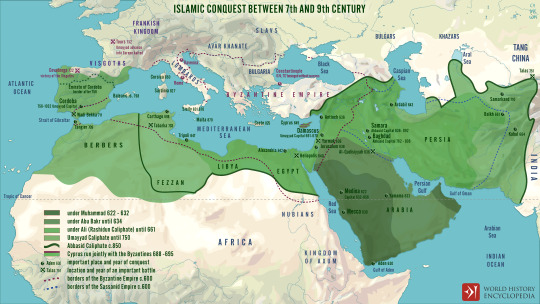
What made Arabisation so successful in the Levant and North Africa, whereas it failed in Iran, India, and the Caucasus?
Arabisation's success in the Levant and North Africa can be attributed to various historical, cultural, and geopolitical factors. The Arab invaders in these regions established centralized rule, which facilitated the spread of Arabic language and culture, I$|@m forced to them and played a crucial role as a unifying force, encouraging adoption of Arabic for religious purposes.
On the other hand, in regions like Iran, India, and the Caucasus, Arabisation faced challenges due to pre-existing rich and established civilizations with their own distinct languages and cultures, which was so much greater than arabs culture, In these areas, the local populations were more resistant to adopting Arabic, and their societies were not as readily assimilated into the Arab-dominated political structures.
in Iran, the Persian language had deep-rooted cultural significance, and Persian dynasties maintained their own identity and resisted Arabisation. In India, the vast and diverse society made it challenging for Arabic to become the dominant language. The Caucasus, with its diverse linguistic landscape and mountainous terrain, also hindered widespread Arabisation.
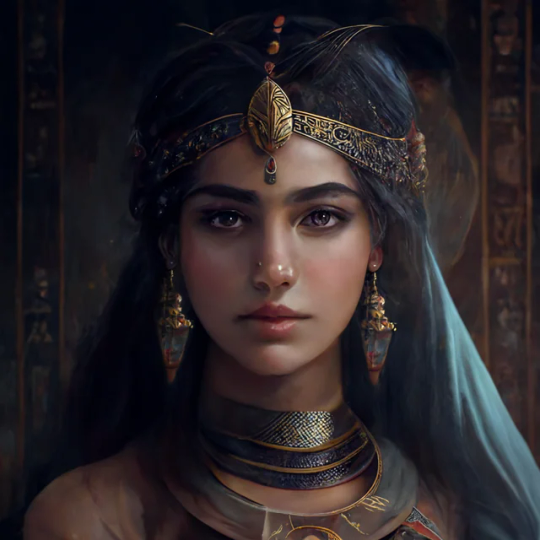
**Resistance and Nationalism**: In places like Iran, there was a strong sense of Persian identity and nationalism till today that resisted Arabisation. Persian language and culture have a long-standing and deeply rooted history that predates Abrahamic religions and the Arab conquests. The same applies to India, where there is a rich tapestry of local languages and cultures, and the Caucasus, where local nationalisms played a role in resisting Arabisation.
the success of Arabisation in the Levant and North Africa was facilitated by factors like centralized rule, religious influence, and a more receptive environment, whereas in Iran, India, and the Caucasus, the pre-existing cultural and linguistic diversity posed significant barriers to its adoption.


#kemetic dreams#islam#islamic jihad#colonization#north africa#levant#western asia#central asia#persian#brownskin#ancient persia#persistence#affirm and persist#persimmon#iran#india#bharat#critical role#african culture#asian culture#asians#asian conquest#brown skin#Arab
41 notes
·
View notes
Note
Is linguistics a science? What do linguists do on the daily?
Oof, this is a hard one!
Linguistics is a very diverse field. What I'd say is that some parts of it are science, some parts are humanities, and some parts are somewhere in between. I would say, uh, the mean scienceness of linguistics is about the same as the mean scienceness of economics, but the variance is way higher.
If you do research in e.g. speech production or neurolinguistics, you're unambiguously doing science. You're running experiments, you probably work in a lab, you're thinking about, you know, brain regions and the anatomy of the vocal tract. It's pretty human biology flavored, from what I can tell.
If you're doing research on child language acquisition or speech perception or the like, you're still doing science, but your methodology is going to look more like e.g. psychology than neuroscience. Psychology is also a really high variance field, there's some solid research and some total bullshit. Probably the same applies for these areas of linguistics—although I do have reasons to think (hope) they are a bit better than psych over all, which I'll get to in a minute.
Then there's phonology and syntax, the "core" of linguistics. These are... weirdly difficult to classify. See, human language, at its core, is a set of interlocking formal systems. It is rules-based. And by "rules", I don't mean the "grammar rules" you were taught in school. I mean the linguistic patterns you subconsciously internalized as a baby, which let you learn to speak your native language without anyone actually teaching you. These rules govern the pronunciation of sounds in a given language (phonology) and the order of words in a given language (syntax). The fields of phonology and syntax involve studying these formal systems on a language-by-language basis, trying to understand how these formal systems are structured across languages.
The actual methodology here is something like this: imagine you were given a bunch of math symbols that you've never seen before, and a list of anywhere from fifty to several thousand equations using those symbols. And someone said "all these equations are true, but I'm not gonna tell you what the symbols mean. Just look at all the equations and put together a consistent theory for how all the symbols behave". Ok, that's syntax and phonology. In syntax, the "symbols" are words in a language and the "equations" are valid sentences. In phonology, the "symbols" are sounds and the "equations" are words. And you do an analysis, and you produce a theory of the symbols which accounts for all the equations that you see.
So, anyway, it's kind of weird. It's kind of its own thing. It's definitely empirical, like a science. And it's far too formal and math-flavored and puzzle-solving-y for me to call it a humanity. But you're not running experiments, exactly, you're not doing a lot of the typical science things. It's all done with pen and paper, like math. So it's kind of its own thing. This is one of the things I like about it, by the way. It's puzzle solving about language. It's neat.
Anyway, then there's historical linguistics, the study of how language changes over time. Historical linguistics involves the comparative method, which relies on the neogrammarian hypothesis. Basically, it involves the same kind of puzzle solving methodology as phonology and syntax, but with a lot of engagement with historical texts, evidence from archeology, and so on, at the same time. It's got a lot of the best parts of the more methodologically rigorous humanities (history), but with a much more STEMish flavor to actually do. All of linguistics has a STEMish flavor, pretty much. It's pretty cool. Historical linguistics is the subfield I'm principally interested in.
All this readily-observable formal structure in language is why I have hope for the psychology-adjacent fields of linguistics, by the way. The formalism constrains what kind of questions are meaningful, it gives us a more precise language to talk about what's going on. In essence, we know that language is the kind of thing which has formalizable patterns in it, whereas IMO we don't have strong evidence that human emotion or (non-linguistic) human social behavior have this same kind of defined symbolic structure. So it feels that people who study speech perception are maybe getting at something a little more concrete and specific than the people who put together the DSM. But, you know, that's just me—I'm not a psychologist, so I don't want to make claims about the field too confidently.
At the least sciency end, you've got things like sociolinguistics, which is methodologically similar to sociology. Difficult to place is linguistic fieldwork, which involves methodologies from all of the above, plus a healthy dose of human interpersonal skill, and involves going out into the world and documenting the way language is spoken directly. Sometimes this involves studying small or endangered languages, etc. There are a couple of people in my grad program who do fieldwork in the Amazon, and they often tell stories about encounters with terrifyingly large spiders. Surely the most adventuresome subfield. And there's formal semantics, the youngest field of linguistics, which is sort of in the syntax/phonology realm of studying language as a formal system. It basically involves trying to understand the logical structure of languages, and has significant overlaps with CS, formal logic, and (analytic) philosophy. Actually, all the fields of formal linguistics have significant CS overlap—computational linguistics is the most popular subfield right now by far.
The thing that makes linguistics hard to classify is that there really is a lot of cross-pollination and sharing of ideas between these fields, they aren't siloed off from each other. So, what do linguists do? A lot of different stuff! Is it a science? Sort of kind of. But it's pretty cool either way.
#linguistics#anon#for posterity#this is the post I'm gonna ling to on this topic from now on#I don't mean socioling is the least scientific in a bad way btw#just factually speaking its methodology is the most clearly humanities
147 notes
·
View notes
Text
Ever-wet and seasonally dry tropical forests in Southeast Asia and New Guinea have been inhabited by people for as long as 40,000 to 50,000 y. There is the evidence for mixed occupancy and land-use patterns by Indigenous peoples engaged in hunting-gathering and horticulture including swidden (shifting or rotational) cultivation, potentially as early as the Pleistocene with more clear intensification in the mid- to late Holocene. Today, tens of millions of people still rely on swidden farming this region, particularly in the uplands, where fallows are often longer. Despite long being cultivated, these highland zones capture some of the most bio-, linguistically, and culturally diverse zones on earth . Nonetheless, swiddening is often framed as “incompatible with nature conservation” or having “significantly perturbed the pristine ecology of tropical forest”, leading to it being criminalized and vilified under top–down conservation approaches, including REDD+ (United Nations collaborative program on reducing emissions from deforestation and forest degradation in developing) schemes. Paleoecological and ethnographic research has, however, shown that varied fallow swidden systems may not only increase landscape-scale biodiversity and forest resilience to climate change, but positively contribute to supporting livelihoods and ecosystem service flows. Better consideration of the role of Indigenous highlanders in making, and perhaps even shaping, forest landscapes and their resilience parameters in conservation initiatives is critical and timely given the rapid land-use transitions in highland regions to intensified cropping, infrastructure development, and or people-free conservation sites.
Indigenous knowledge and the shackles of wilderness
142 notes
·
View notes
Text
The reason I post on Tumblr is that I'm trying to spread the news about the Iran revolution and my targeted audience is non-iranians around the world. It's a fact that people of different nations mostly know each other by nationalities and not subgroups and ethnicities. For example, I know people from China or Russia or Argentina as Chinese and Russians and Argentines, but I have very limited knowledge about the cultural and linguistic diversity within different countries. I know about some ethnic groups through media or documentary programs, and I know more about the people of neighboring countries because of proximity and common grounds, but you can't expect me to know the demographics of every country around the world, and in return, I don't expect citizens of other countries to know the details of existing ethnicities in Iran, a country that has been isolated and pushed out of pictures for decades. With all these said I like to give very basic information about the ethnic structure of Iran's population.

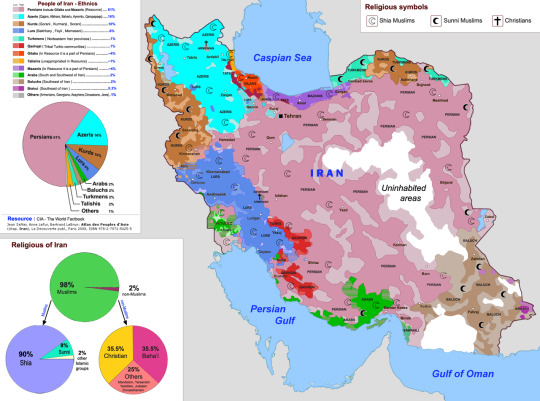
Ethnic map of Iran
Iran has always been a multi-ethnic, multi-racial, multi-culture, and multi-lingual nation. Iranian is the nationality and not an ethnical or racial identity. Persians, Kurds, different branches of Turks, Balochs, Lurs, Arabs, Gilaks, Mazanis, etc, etc, are the racial or ethnic identities that have made Iran's body. These ethnic groups have their own language or dialect, their own culture and food, costumes and urban legends, and in some cases particular religion. This makes Iran a very colorful country, which obviously can be a place of wonder but also trouble.

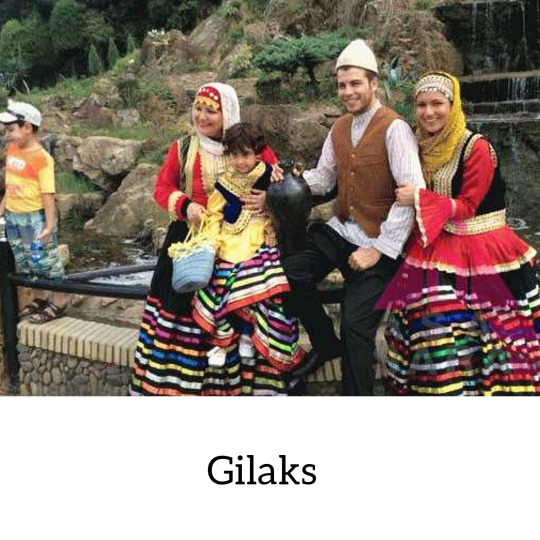
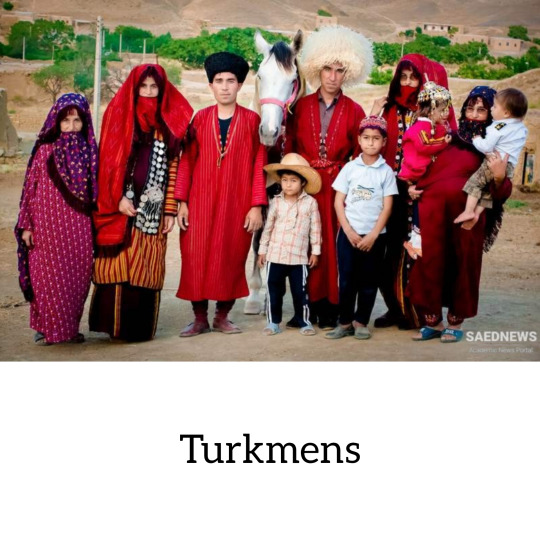
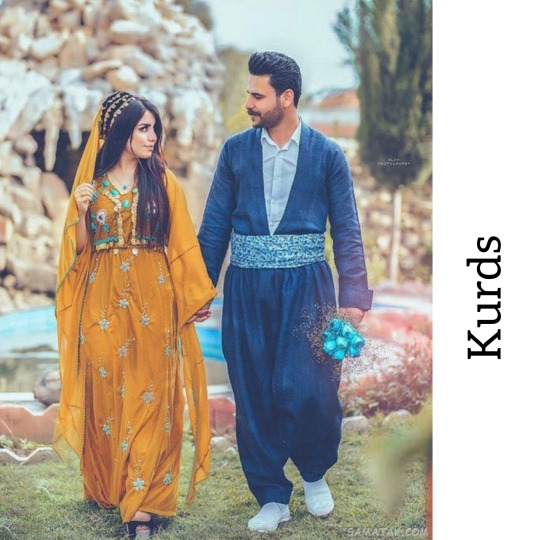
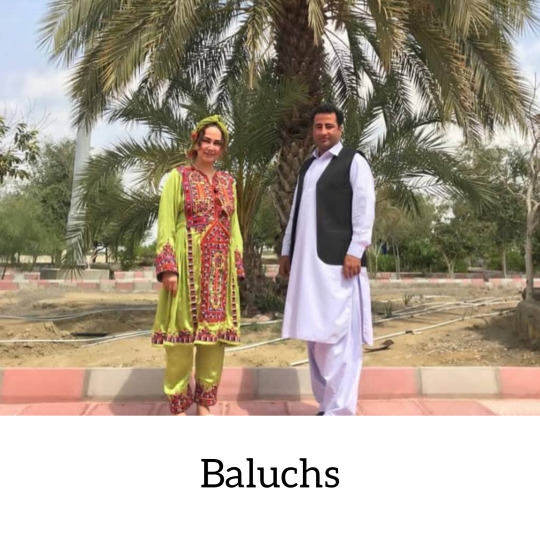
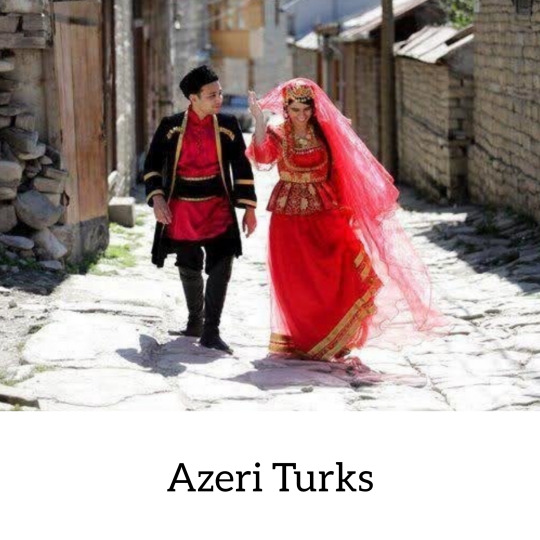
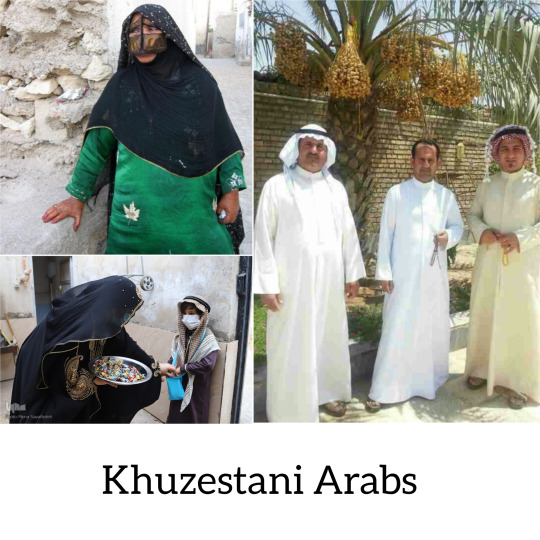
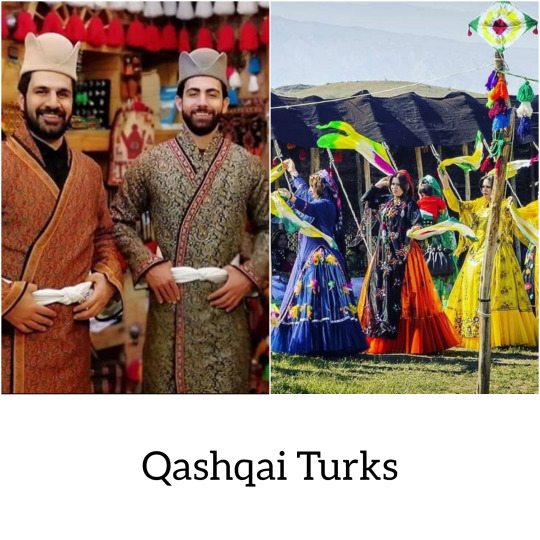

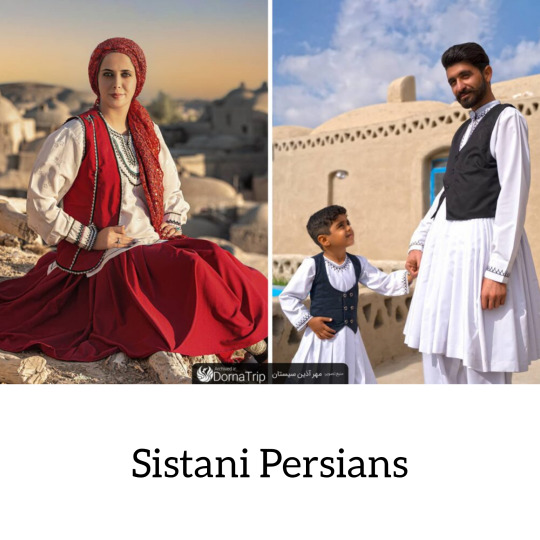


Some of the Folk Costumes in Iran
The relations among these ethnicities and their relation with the capital and the ruling system through history is complicated and differs from region to region, dynasty to dynasty. As you might know, the country you know as Iran today is the remains of an old empire that has gone through many uprises and downfalls, wars and invasions, and rebordering. Here's a quick video of how Iran's borders have changed through history; got bigger, shrank in size, and moved east and west.
youtube
The trouble with having so much variety within a country is the unpleasant manifestation of racism, favoritism, and discrimination. This problem has gotten a lot worse under the islamic republic regime. Even though favoritism and racism by the government have existed to different degrees in previous dynasties, the Islamic Republic took it to another level and since it's a theocracy, they added the element of religion stronger than ever to the discrimination mix.
Currently, in Iran, the uneven distribution of wealth and resources, and the government's neglect in many provinces and cities have made a huge gap between prosperity levels in crucial cities like tha capital, Tehran, and everywhere else. Tehran currently is the most populated city in western Asia. It's actually overpopulated, and this overpopulation is causing many environmental problems like air pollution in the city. The main reason is immigration because of the concentration of facilities and opportunities in the capital in contrast with non-existent facilities in other areas. Many people, including my family, have moved to Tehran, temporarily or permanently, to get a better chance at education or finding a job.
Apart from financial fairness, the islamic republic has been dead set on destroying ethnic identities in Iran. Banning the writing, reading, and learning of native languages at schools is one example. In many cities around the country, Persian is not the first language of daily communication. Persian as the official language is the mediator language that makes it possible for people from different regions to communicate. Different accents of Persian are the main and only language in many cities. Some cities are bilingual, but in others, Persian is like English in European countries, just a mediator, not the main native language. Almost everyone can understand and speak Persian, but native languages are the preferred language of daily life in cities with the majority of that ethnic population.
Another example is the restriction on wearing native clothes. In this one, the Islamic Republic hasn't been completely achieved, but they've been able to pale the usage or change the original form of most ethnic styles. For example, to make all the Iranian women uniformly dressed, they successfully changed the colorful veiling of Baloch women to a Black chador.
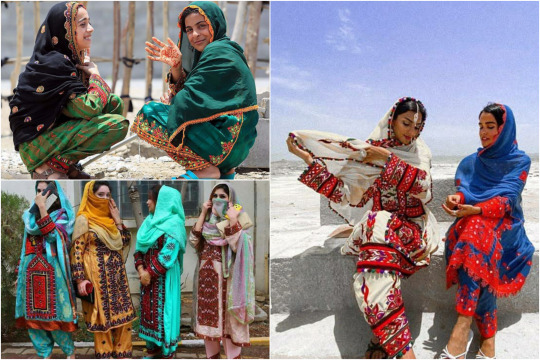

The original colorful clothing of Baloch women vs the black chador Islamic Republic has forced on them
Last but not least, based on religious beliefs, cities with the majority of non-shia muslim populations face discrimination times and times worse. Lots of Kurdish and Baloch cities have a majority of sunni muslim people. In the recent protests, the level of oppressing violence these cities have faced is far worse than in other states. Where in Tehran they shoot us mostly with shotguns, they only use battle rifles in Kurdistan and Zahedan. In only one day, Bloody Friday of Zahedan, they killed at least 96 Baloch people. Baloch people are also the first group of arrested protesters the regime has started executing. They're being murdered by the regime everyday now. These were only discriminations they're faced during the protests. A region with many metal mines like gold, and various industries is in so much poverty you'd think it's a war-struck place. Poverty, lack of clean drinking water, and identity paper restrictions are some of the examples of problems in Sistan and Baluchestan province.
In Kurdish cities the regime brought Tanks and DShK to suppress people, as if a foreign army has striked. People of Kurd never accepted the Islamic Republic regime and have been fighting its authority for decades now. Mahsa Amini, as you probably know by now, was from a Kurdish city named Saqez. The protests started in front of the hospital she passed away in, in Tehran, but it turned into full on revolution at her funeral, in her homeland, where Kurd women took their headscarves off and chanted "jîn, jîyan, azadî".
Fighting regional and racial discrimination in the free democratic future of Iran will be another obstacle our nation should deal with alongside women's rights, children's rights, LGBT rights, and working group rights.
#Youtube#iran#mahsa amini#iran protests#human rights#iran revolution#feminism#politics#ethnicfashion#racism#sexism#history#demographic groups#middle east#muslim women#shia muslims#sunni muslims#women's rights#tw violence#islamic republic vs iran#police brutality#iran explained#background information
126 notes
·
View notes
Note
i saw in your "describe your accent" post you deride people using the term 'general american' to refer to their accent, but that is actually a linguistic term for the american accent that originated in the midwest and became the default accent of news/broadcasting, which in turn a lot of people speak especially if they don't come from areas with established regional diversity. Its label is generally used when comparing large groups of people in a study, for example comparing people from the US to the UK when you are not concerned with region-specific differences.
Also, just as a note, region alone does not define what accent you have, accent varies by class, race, gender, ethnicity, religion, age, sexual orientation etc. and using dismissive language to talk about how people self-identify their accent is kinda a shitty move, even if you may think you're punching up.
hi I made that post when I was 13 . I have . gotten this ask 600 times
edit: also like not to feel the need to explain myself further or whatever but in the multiple years since making that post I've like. become so invested in language that i am seriously considering figuring out a way to study semantics as a, like, sustainable career. I promise I understand what words mean more than I did in middle school.
#asks#i forget sometimes not everuone has timestamps on .#i just rb it when it comes back bc its 136000 notes snd that horrifies me#and bc every time it comes back i get the exact same asks over and over so mogjt as well clarify what People Are Talking About#u have good intnetions with this ask but like. check timestamps on huge posts before you go say something to the op please 👍#bc there is a higj possibility theyve heard it before and are running out of ways to say 'ok cool'👍
7 notes
·
View notes